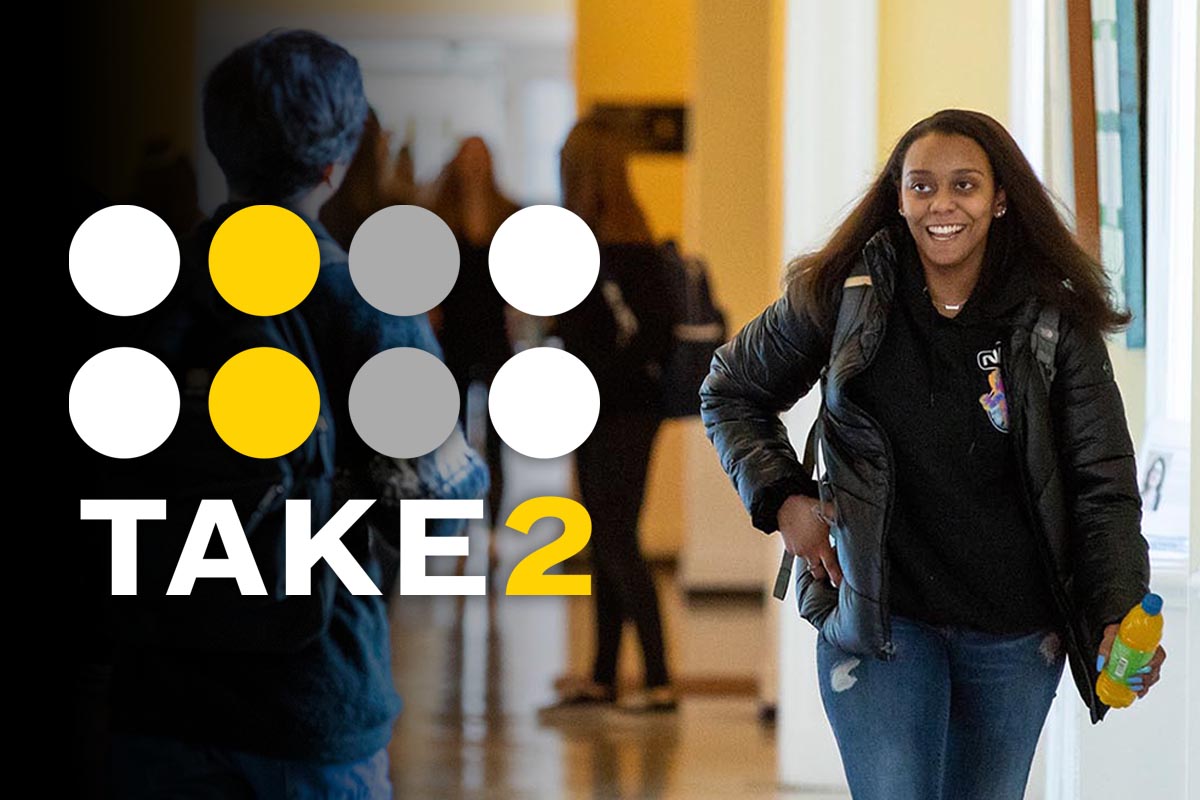Basquiat, Boom! for Real, and the Berlind Symposium: A Q&A with filmmaker/director Sara Driver ’77

Sara Driver ’77
Acclaimed, independent filmmaker Sara Driver ’77 will be one of the featured guests for the 27th Annual Helen Clark Berlind Symposium October 20-21 at the Maier Museum of Art at Randolph College.
Held in conjunction with the 107th Annual Exhibition of Contemporary Art, Zeitgeist: The Art Scene of Teenage Basquiat, the Berlind Symposium will include a special screening of the new film, Boom! for Real: The Teenage Years of Jean-Michel Basquiat. Driver, who directed the film, will make an introduction and lead a post-screening discussion. She will also moderate a panel discussion with artists who knew and worked with Jean-Michel Basquiat. See the complete schedule at www.maiermuseum.org/berlind.
In addition, the Maier is hosting a series of film screenings held in conjunction with the Annual Exhibition. For more information and the complete schedule, visit http://maiermuseum.org/films/.
As we lead up to the film screening, Driver shared insight on Boom! for Real and her work in the filmmaking industry:
How did the opportunity come about for you to direct Boom! For Real, and why did you want to do it?
“After Hurricane Sandy hit New York City in late October 2012 and flooded the lower East Side of Manhattan, I went over to my friend Alexis Adler’s house for a tea and to see how she fared during the flooding. All her friends knew she lived with Jean-Michel Basquiat in late ‘70s. He painted a lovely mural on her bedroom wall as well as her bathroom door and refrigerator door. Alexis is scientist and had put away works he left for her in a safety deposit box over 30 years ago. The bank was in the flood zone.
“Fearfully, she and her daughter Zoe went to the safety deposit box, which was under street level. They went and found much more than Alexis remembered—60 drawings and writings, a notebook, and over 150 photographs she took of him. All were in very good shape. She showed me everything. It was works done while he was finding his way as an artist. He was extremely transient during this time, and very few of these examples of his early drawings and works exist. When I looked at everything, I got very excited and thought this was not only a window into this young, developing artist, but also a window into that particular moment in time in downtown NYC. I went out and bought a camera and started shooting.”
What was the process like in creating the film?
“The film took four years to make. It was made in a similar way we made films in the late ‘70s—with very little money, but lots of help and collaboration. The artists, writers, and filmmakers whose works are now on view at the Maier Museum were my collaborators. Without them, I would not have been able to create this portrait of NYC during these years. The art community rallied around the film. Some of them knew me and others did not, but knew of me. All helped due to their faith in my having been a part of that community and witnessed it. Everyone wanted our story, NYC 1978-81, told by someone who was there.”
What was one of the most challenging parts about directing the film?
“Getting financing. It is very difficult in this country to get funding, especially for women. The percentage of female directors in this country is only 4.3 percent (films made averaged out between 2007-17). Europe has government support for their filmmakers, and the percentage of women filmmakers in Europe is higher. For example, in France, it is 40 percent. My film was backed by three European men, and two of them were distributors—one in France and one in Portugal—who pre-bought the film for their countries. My other investor was a wonderful Greek executive producer, Christos Konstantakopoulos. We had a very small, dedicated shooting crew of five people—three on cameras of different mediums (I was on one of the cameras), one sound, and a producer. Our post-production team was also diligent and gifted, and consisted of four primary crew: editor, archivist, producer, and myself. It was an intimate and great way to work.”
Alternatively, what was one of the most enjoyable parts of directing the film?
“Discovering more about Jean-Michel. For example, I discovered that after he ran away from home and was living with different people downtown, he kind of put together his own university, seeking out people like Alexis Adler, Luc Sante, Jim Jarmusch, Fab Five Freddy, Lee Quinones, Mary Ann Monforton, etc. He was four years or so younger than these recent university graduates. Jean-Michel loved ideas and the exchange of ideas. It was also great to rediscover old friendships, and also become friends with people I knew of but had not known previously. There was also the wonderful collaboration with musicians from the time. Music rights would have been cost prohibitive, and our film is full of music of the time. But, with the help and support of these musicians, I was able to get the rights for a nominal fee.”
How did you feel about the finished product, and what was it like seeing the premiere at the International Film Center in New York?
“I don’t like the word ‘product’ for a film, although I guess that is what it is. It premiered at the Toronto International Film Festival. That is one of the most prestigious platforms for documentaries. They only accept 12 or 15 internationally. And where your film premieres is similar to where your child goes to college. That dictates the film’s theatrical life and world sales. The film was picked up by one of the very best world sales agents, and is now opening all over the world.
“The film also was honored by being selected for the New York Film Festival. It showed at Alice Tully Hall at Lincoln Center. Not all the documentaries get shown in this vast theater, so we were over the moon when we saw it was programmed there. In Toronto, the film was bought by the acclaimed independent distributors in the U.S.—Magnolia. They opened it theatrically at the International Film Center (IFC) in NYC. It then was shown in cities all over the country. It was just released on streaming platforms.”
What does it mean to you to now have Boom! for Real as part of the exhibition at the Maier?
“I have always admired the incredible collection of art at R-MWC or Randolph College. The Maier always fascinated me by its Cold War association with the National Portrait Gallery in D.C.
“Boom! for Real instigated the art exhibit, Zeitgeist: The Art Scene of Teenage Basquiat. I went to Howl Happenings, a gallery in the East Village in NYC, and asked if they could do an exhibit in conjunction with the opening of the film at IFC in May. One of the heads of the gallery said to me definitively, ‘We are booked till 2020.’ I showed them the list of artists who would be in the show and who had given me material for the film. After reviewing the list a few days later, I got a call. They had an opening in the gallery in May. They had a cancellation. The dates worked perfectly for the NYC premiere of the film. Martha Johnson from the Maier Museum came up for the festivities and opening. She began to formulate a plan with the two heads of Howl Happenings, Ted Riederer and Jane Friedman (Jane is a legend in the history of rock and roll. She represented Jimi Hendrix and managed Patti Smith).
“I am thrilled that students and the community of Lynchburg and surrounding areas will have access to the exhibit. A lovely catalog was also made for the exhibit, and I just got the news it will be published in Japan for the distribution of Boom! for Real there! It seems, too, there is another request to move the exhibit to another city after it closes at the Maier.”
What’s some of the feedback you’ve gotten about the film so far?
“The New York Times gave it a Critic’s Choice Award, and the headline of the review is: ‘Boom! for Real is a Beguiling Look at a Teenage Basquiat.’ Read the reviews.”
What are you looking forward to most about the upcoming Berlind Symposium?
“I am looking forward to seeing the exhibit in its new temporary home at the Maier Museum, being in beautiful Virginia with our little posse coming down from NYC—Luc Sante, Alexis Adler, Lee Quinones, and Mary Ann Monforton. I’m also looking forward to getting the reaction to the exhibit and film from the audience and public, meeting and talking to students and finding out their interests, and, best of all, seeing one of my oldest, dearest friends and college roommate, Trisha Labadie, and my pal, Betty Alice Fowler, from R-MWC.”
What advice would you give to Randolph students who are considering a career in filmmaking?
“I would say with punk attitude—‘Just do it.’ If you have a story to tell, gather your friends and collaborators, get a camera, and start shooting. Don’t be stopped by financing if you can help it. Make films in a scrappy way. Even if they’re technically not perfect, that’s okay if the drive and emotion is there. The story will come through. Also, pay attention to sound. Sound is half the experience of watching a film. It is often subliminal, but so important. I watched a film two nights ago at the NYFF. The seat was not in a good spot, so the sound was terrible and I missed a good deal of the film. Think of Hitchcock—without sound and music, there would be no tension or suspense.”
How did your own experience at R-MWC prepare you for your career?
“Going to a women’s college and having a professional feminist mom gave me strength to enter a very male field. It was like Popeye’s use of spinach to give him strength. R-MWC gave me the spinach to fill my pipe. I was shocked and very naive when I got out of college at the misogyny in the film industry and in the art community. This only made me more determined to find my way. When I produced Stranger than Paradise for Jim Jarmusch, there were very few women producers. I found the commercial equipment house (teamsters) actually very respectful and kind to me in assisting me in producing our very low budget 35mm film. In the early ‘80s, I was kind of an anomaly they had rarely seen before. That film premiered much to our surprise at the Cannes Film Festival in 1984, and won the Camera D’Or.”
The screening of Boom for Real is sponsored by The Sara Driver ’77 Digital Filmmaking and Lecture Fund, established through the generosity of Albert W. and Martha Lou Driver ’50. The 107th Annual Exhibition is supported by the generosity of Mary Gray Shockey ’69. The 27th Annual Helen Clark Berlind Symposium is supported by the Helen Clark Berlind Symposium Fund, as well as Maier Members Julie Johnson McGowen ’69, Barbara Niedland McCarthy ’73, and Dana Davidson Redmond ’60. Zeitgeist: The Art Scene of Teenage Basquiat was curated by Sara Driver ‘77, Carlo McCormick, Mary-Ann Monforton, and Howl! Happening, An Arturo Vega Project with Jane Friedman and Ted Riederer.
Tags: 107th annual exhibition of contemporary art, alumnae, alumnae accomplishments, art, Boom for Real, communication studies, events, film screening, filmmaking, films, Heather Clark Berlind Symposium, Jean-Michel Basquiat, Maier Museum of Art at Randolph College, quotables-art, quotables-communicationstudies, Sara Driver, Zeitgeist
